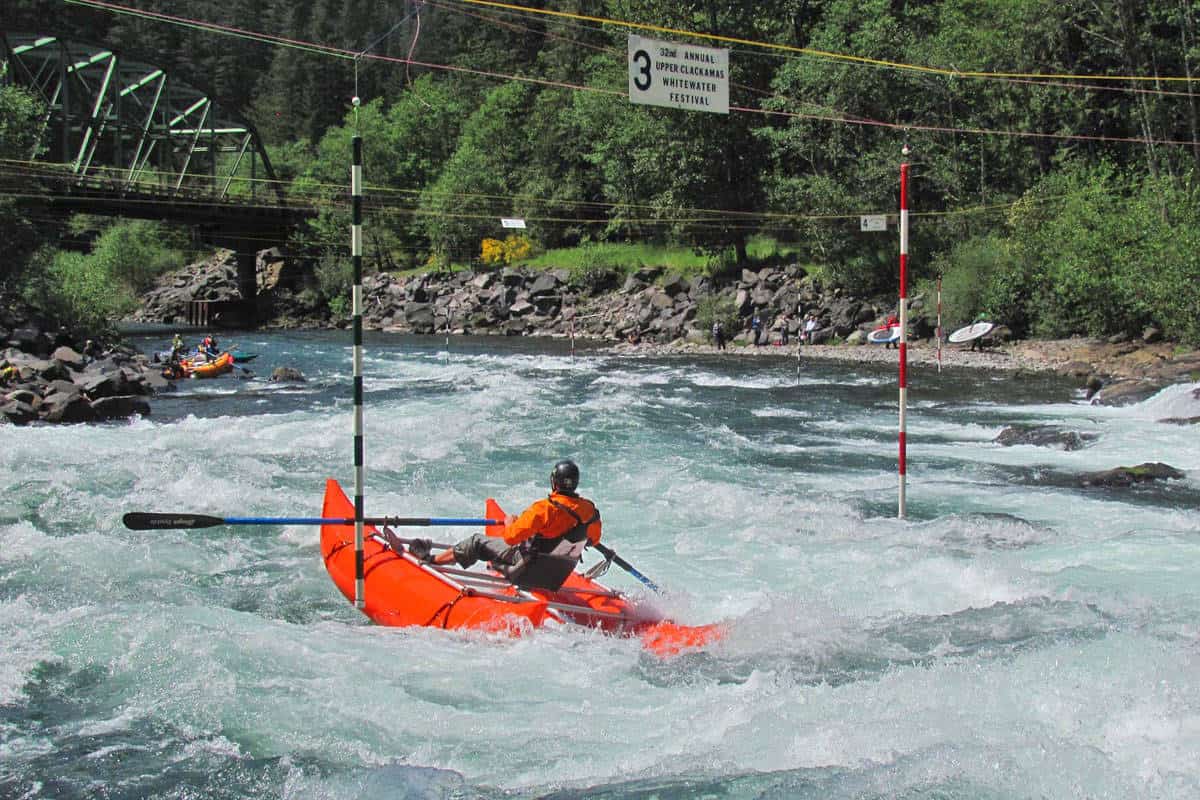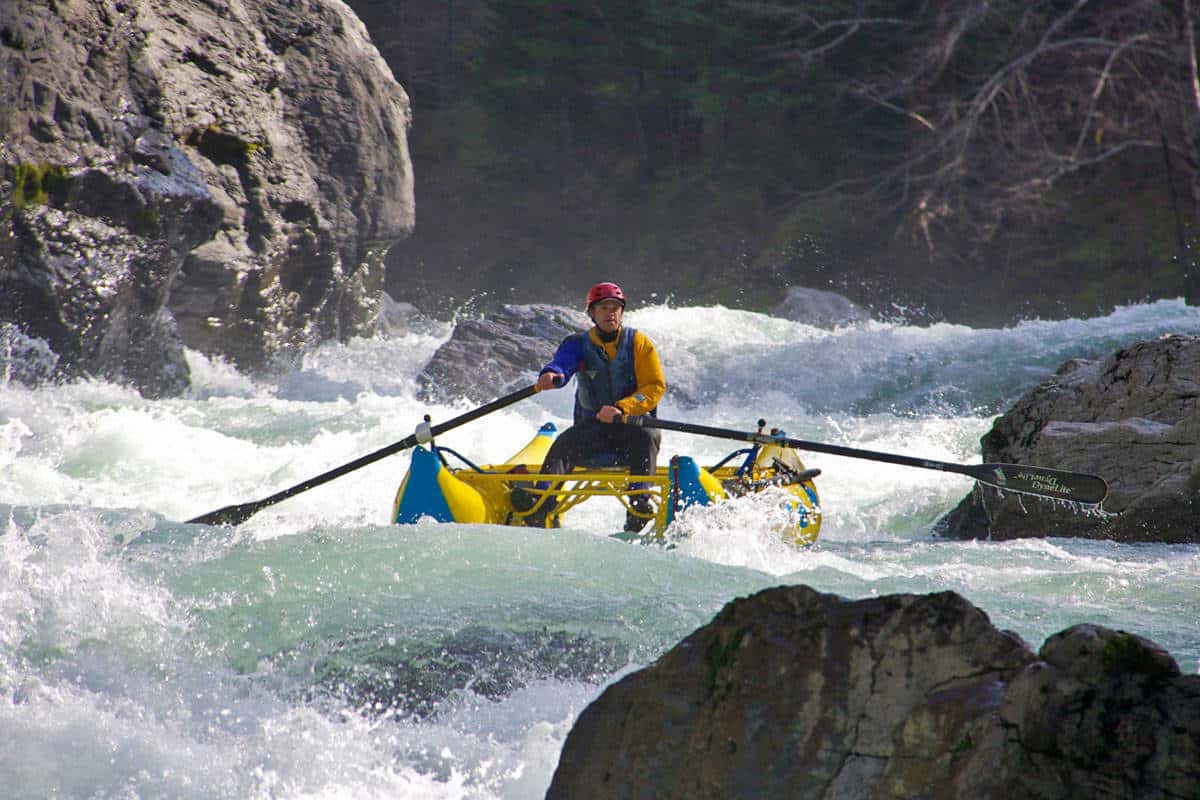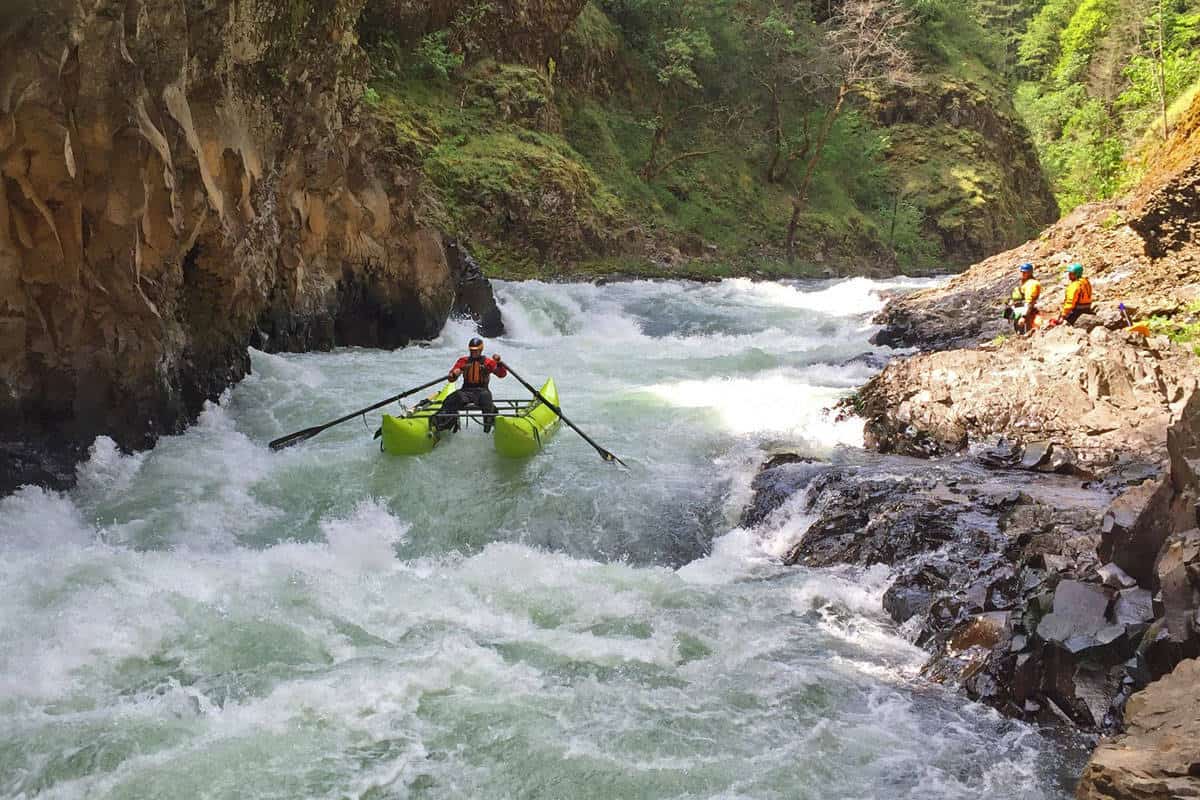Earlier this month I attended the Upper Clackamas Whiteater Festival. If you for some crazy reason have never been, you should go next year. It has the relaxed friendly atmosphere of a county fair with lots of competitions on the water and a great community of dedicated boaters. One of the best features for rafters is the fleets of demo rafts and catarafts brought by the manufacturers. A supremely helpful crew of volunteers drive boats on flat bed trailers to a put-in upstream and then pick them up again a couple miles down river. Sign up and you can do some head to head test driving of boats from SOTAR, Maravia, Aire and NRS. If you are in the market for a new raft or cataraft, it’s like being a kid in a candy store.

Sunday morning, I left the Whitewater Rowing School booth, pulled on my dry suit and took some boats for a spin. I was excited to learn more about different boats for myself and my rowing students. I figured I had time for three laps on the river and decided to concentrate on catarafts.
My particular rowing style developed in Avon Pro bucket boats on the Tuolumne River in California. Pro’s did some things very well. With just a sheet of hypalon for a floor, they carried most of their weight on the tubes. This made them excellent tracking boats, the two tubes acting something like a pair of sled runners. Get them going in a straight line and they could “track” across current.
Carrying their weight on the tubes had another advantage. When driven hard across an eddy line, the weight of the boat was thrown onto the “elbow” the place where the side tubes connected to the back section of the raft. This made for a dramatic pivot and quick changes of direction.
Catarafts will also pivot dramatically when driven hard across an eddy line. They can snap around in an eddy turn, sometimes almost like a kayak. The first cats had longish fairly flat waterlines, which made them excellent tracking boats as well.
When rowers began pushing catarafts to the cutting edge of Class V rafting, the design of the waterlines changed. The tubes got bigger and some of the profiles became more banana shaped to allow very quick spins and rockering up out of big holes
I was curious to get oars into the water on three state of the art cats. The Maravia 12×22, the 13’ 21” tube Aire Wave Destroyer, and the, 10’ long 21” tube SOTAR specially designed by David Nissen of Madcatr Frames. They are all Class V play boats, not really designed to carry a lot of gear, and getting to row them back to back was a blast.
The water was not Class V and I was not really looking to test their top end capabilities. I did have a chance to drive them all with downstream ferry angles into eddies, run some hydraulics, and get a sense of their quick acceleration and pivoting.
Dave Nissen’s 11.5′ SOTAR Cataraft
My first ride was in the Dave Nissen SOTAR. It jumped off the oars, spun with ease and with its front end rocker, rode up and surfed me around a turn on some diagonal waves. With a little less water line rocker than the SOTAR Legend and SL models, it tracked some neat lines. Very responsive, very fun. It was like a super Swiss army knife. Great for everything.

AIRE Wave Destroyer
The Wave Destroyer had the longest and straightest water line of the three boats. It was noticeably able to track and when I ran the same waves as the SOTAR, it’s nose penetrated the same waves the Sotar rode on top of. It reminded me of a classic Russian cat boat, designed to show as little resistance as possible to hydraulics. For a rower like me who loves to track, I loved it and had no problem getting it going or pivoting.
img src=”https://www.nwrafting.com/wp-content/uploads/2016/05/AIRE-Wave-Destroyer-1.jpg” alt=”AIRE Wave Destroyer on the Upper Wind River” width=”1201″ height=”800″ class=”size-full wp-image-3073″ /> AIRE Wave Destroyer on the Upper Wind RiverMaravia 12×22
Finally, I drove the Maravia 12×22, the most rockered of the three designs. Not necessarily designed to track, it pivoted in a Class V nano-second. I felt like a ballerina. It’s big tubes rode high on the water, very reassuring for big stuff. Like the SOTAR, it rode up and surfed me on the diagonal waves. Accelerating with ease, it snapped off eddy turns and was overall another outstanding feeling boat.

In other words, there were excellent qualities to choose from in all these boats. They all had significant strengths and choosing one would depend a lot of the type of boating you’d want to do and rivers you’d want to run. They would all be great boats to own.
Come to the Clackamas River next spring and decide for yourself. You will meet some great people and maybe even have a little fun.

